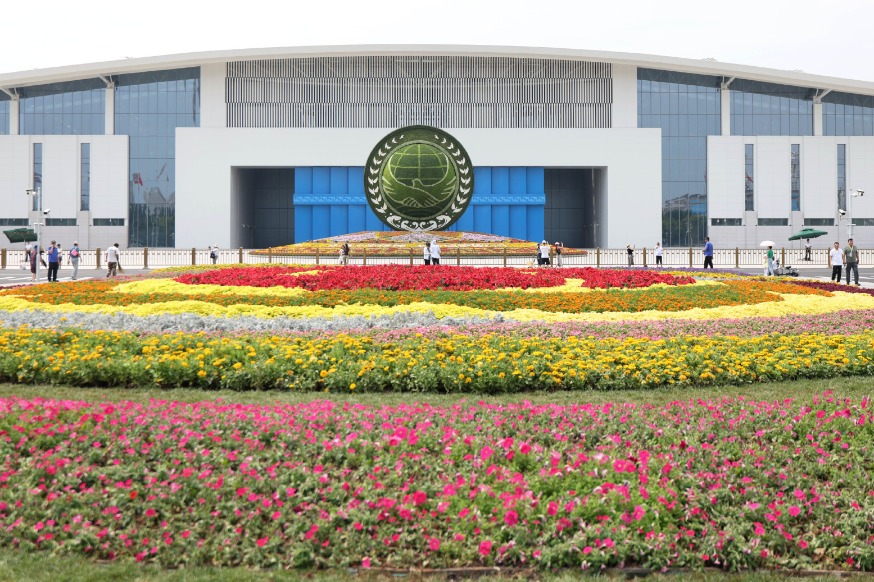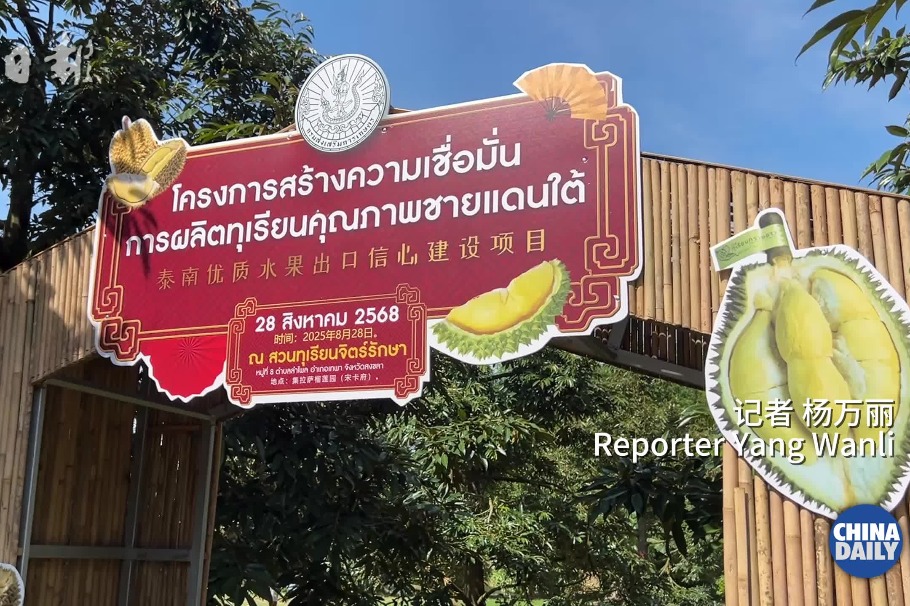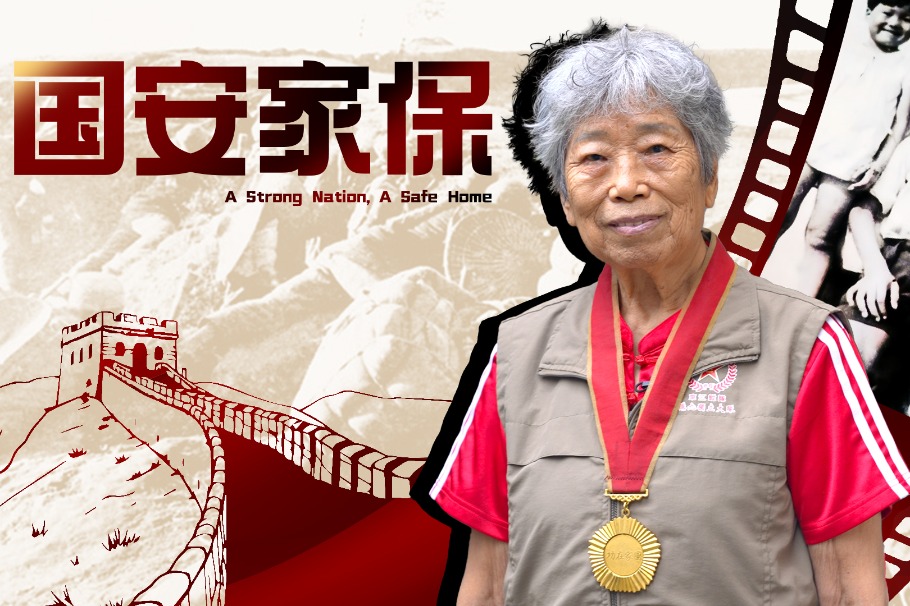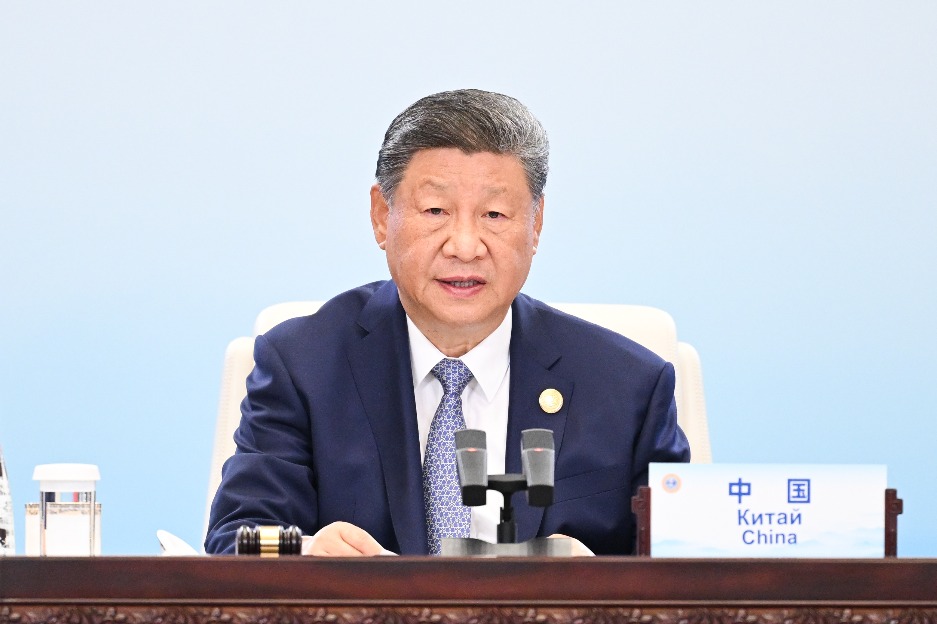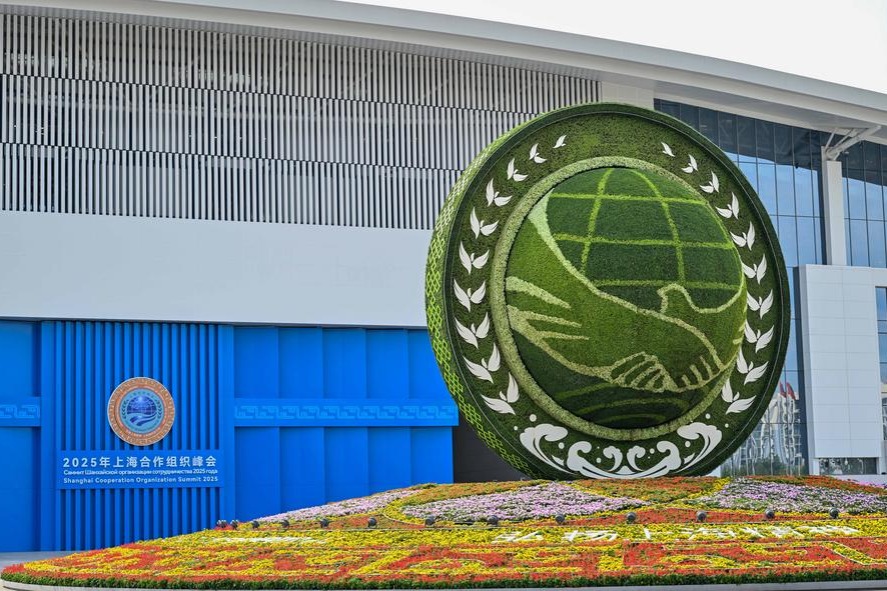A flowering of imagination
Plant arrangement and making bouquets are rooted in Chinese culture, and one practitioner is carrying on the tradition, Yang Feiyue reports.

With a pair of scissors, a couple of rubber bands and ribbons, Liang Qinzhang can turn twigs, branches and flowers into a cornucopia of bliss.
The man in his 60s demonstrated traditional flower arrangement for gardening enthusiasts in Beijing during Spring Festival in late January.
"As Chinese tradition goes, I use wintersweet and magnolia, whose blossoms herald good fortune, as well as lily to mean harmony and happiness," Liang explains.
"They are paired with pine and cypress, both of which symbolize longevity and vitality," he adds.
Chrysanthemum and camellia were also added as a foundation for the artwork to enrich the content and ensure balanced aesthetics.
"They are all auspicious plants and can be combined to please the eye," Liang says.
There's method in the seemingly random arrangement under Liang's hands, as he managed to deliver two pieces of stunning flower arrangement works in half an hour, one in a tall green vase and one on a dark blue plate.
"Since ancient times, different mediums have been applied to create a grand effect for special occasions," he says.
At the end of the session, Liang hung festive items like miniature lanterns and firecrackers on the plants to highlight the holiday atmosphere, and suggested his audience do the same.
Liang held the demonstration in the belief that it should be easy for the traditional art, named as a national intangible cultural heritage in 2008, to be enjoyed by more people.
"All you need is a few branches and flowers that carry the implied meaning close to your heart," he says.
Then, the general principle is that one needs to arrange them in a way so that they look to expand in space.
"The key is to create layers and a three-dimensional effect," he explains.
Natural beauty
Traces of Chinese flower arrangement can be found in Shijing (The Book of Songs) written more than 3,000 years ago, as it featured many scenes of young lovers cutting flowers, twigs and leaves as tokens of courtship.
In the late Eastern Han Dynasty (25-220), with the introduction of Buddhism from India, practitioners started to place cut flowers on temple altars, and flower arrangement took on a strong religious flavor with strict rules.
Part of the reason was that Buddhism forbids the killing of animals, and so cuttings from plants were used as offerings. Also, dedicating time to arranging flowers and leaves reflected religious piety.
In the Tang Dynasty (618-907), flower arrangement was pursued among aristocrats and the imperial court. Its popularity widened, especially among the literati, during the Song Dynasty (960-1279), when flower arrangement was put on a par with tea making, mounting of paintings and incense burning. The four activities were regarded as a standard pursuit by gentlemen who sought inner tranquility.
Liang believes traditional Chinese flower arrangement is different from its Western counterpart.
"It places more focus on the expression of mood and the personalized meaning of the materials used," he says.
For example, plum blossom, orchid, bamboo and chrysanthemum have been endowed with characteristics representing loftiness, righteousness, modesty and purity, and thus deemed the "four gentlemen of flowers".
"Chinese flower arrangement is influenced by traditional Chinese culture and tends to be more about natural beauty, rather than artificial creation," Liang says.
"Therefore, we need to go out more often to observe the plants, see how the flowers grow and understand the ecological habits of the flowering branches, through which we can know how to make a better arrangement of them."
A systematic record of the country's flower arrangement tradition over 250 years ago was missing.
The art was put on hold because of poverty and war in the mid-to-late Qing Dynasty (1644-1911), and it was not until the 1990s that Chinese artists started to realize its importance as a cultural heritage.
Liang and other senior flower arrangement artists then started to look into historical materials and restore the ancient art to publicize its essence and charm.
Inheritor of craft
Liang got a job offer at Zizhuyuan Park (Purple Bamboo Park) in 1978, and made a career there for over four decades.
He started off building infrastructure, laying concrete, plastering walls and taking care of maintenance work. All these paved the way for the flower artwork afterward.
"In the past, the flower terrace framework needs to be made on-site by park staff, so a qualified horticultural worker is required to be equipped with both art and various technical skills, such as civil engineering, and water and electricity supply," Liang says.
He was then sent to the horticulture division, where he studied flower cultivation and management from experienced staff members.
"I saw how they took care of the flowers like their children and tried to understand the flowers' growth and habits," he recalls.
"I was deeply impressed."
Liang got good measure of the craftsmanship involved as his teachers meticulously watered and applied fertilizers to plants in the park and then pruned them into their best shape.
He also saw how the trade brought joy to the public.
"That was when I was determined to make a go of it," he says.
Liang cut his teeth on arranging flowers for Tian'anmen Square in the '90s, when he and his colleagues needed to deliver different themes and patterns every year.
The challenging opportunities allowed him to work with senior staff members, tackling problems and delivering refined floral artworks, which saw him quickly hone his skills and upgrade understanding of the art.
In the early 2000s, Liang started to focus on traditional flower arrangement studies, and was then invited to arrange flowers for the 2008 Olympics in Beijing.
The main flower used in the bouquet for the Olympic awards was moonflower, which means flourishing and prosperity, and its number in any bouquet is usually nine, which is homonymous with the Chinese word meaning everlasting, Liang explains.
Other flowers included Reineckia carnea, fragrant plantain lily and hypericum, and six of them were used in each bouquet to suggest a smooth ride.
Liang checked every single bouquet when it was done, before signing off on it being packaged in a box.
"The bouquet-making process was rigorous and complicated, and there was no room for negligence in any step," he says.
"Every leaf and blossom also had to be examined before they were taken out from the cold store," he says, adding that the best scenario was nothing would come off when the athletes waved them over their heads.
Decades of experience with flowers have enabled Liang to deliver splendid floral artworks and be named an inheritor of traditional Chinese flower arrangement by the China Flower Arrangement Association in 2013.
Cultivating youth
Modern Chinese garden design and landscaping has been greatly influenced by Ming Dynasty (1368-1644) artists who placed more weight on naturalism, which promoted asymmetrical beauty, according to Wang Lianying, a flower arrangement artist with the association.
Wang, for one, believes symmetry, with straight columns and lines, would look rigid and unnatural.
She is strongly against tying flowers up with knots to this end.
Yet, she stresses that naturalism does not mean arranging the flowers chaotically or prosaically.
"There are still limits. One should always follow the botanical principles to keep the appearance natural," Wang says.
Since Liang's retirement in 2017, he has kept practicing the art and tried to spread its beauty in various occasions, ranging from flower arrangement competitions, exhibitions and lectures.
In addition to imparting technical skills, Liang has hammered home to his students about love and respect toward plants.
"The pruning should not hinder the growth of the plant, nor let it be deprived of water for the sake of visual effect," he says.
"One should also try to make the best of flowers to avoid waste."
Liang says he felt he was busier than before, yet in a good way.
He hopes his efforts can have more people pay attention to the art, study and love it.
"The art of traditional Chinese flower arrangement has its own characteristics, which we study, retain, imitate and learn from," Liang says, adding that he and his counterparts in the field have tried to bring modern elements to it.
"I will strive to draw the essence of the traditional flower arrangement concept and combine it with people's life nowadays, so that the art form can flourish while better serving the public," he says.



Today's Top News
- SCO can catalyze a fairer world order
- Chinese FM highlights fruitful outcomes of SCO Tianjin Summit
- SCO Plus carries Shanghai Spirit forward in pursuit of improved global governance: China Daily editorial
- China's V-Day gathering to start at 9 am, Sept 3 at Tian'anmen Square
- Shenzhen-Hong Kong-Guangzhou innovation cluster tops global ranking
- Xi calls for forging ahead with solid steps as SCO convenes largest-ever summit

















